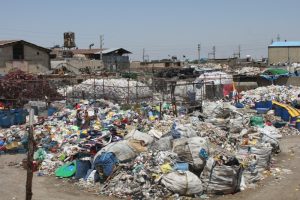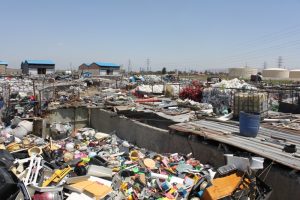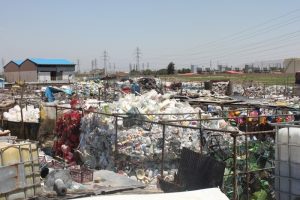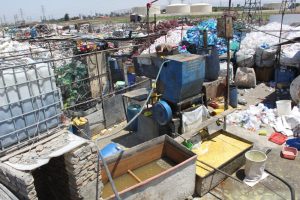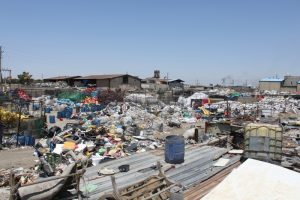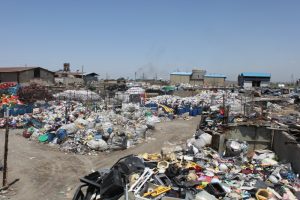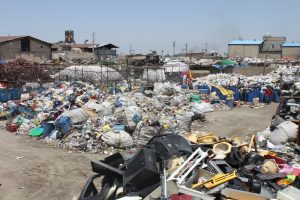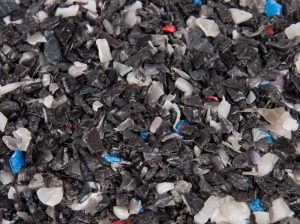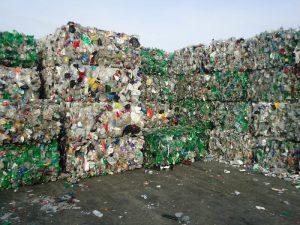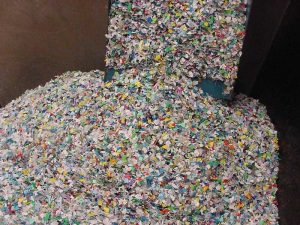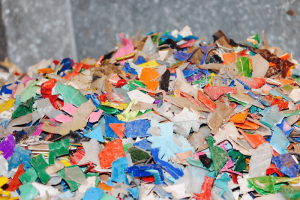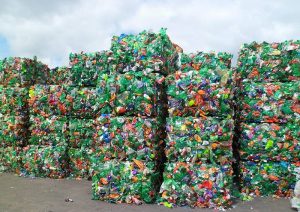Recycling
Recycling is the process of converting waste materials into new materials and objects. It is an alternative to “conventional” waste disposal that can save material and help lower greenhouse gas emissions. Recycling can prevent the waste of potentially useful materials and reduce the consumption of fresh raw materials, thereby reducing: energy usage, air pollution (from incineration), and water pollution (from landfilling).
Recycling consumer waste
Collection:
A number of different systems have been implemented to collect recyclates from the general waste stream. These systems lie along the spectrum of trade-off between public convenience and government ease and expense. The three main categories of collection are “drop-off centers,” “buy-back centers”, and “curbside collection.”
1- Curbside collection
Curbside collection encompasses many subtly different systems, which differ mostly on where in the process the recyclates are sorted and cleaned. The main categories are mixed waste collection, commingled recyclables, and source separation. A waste collection vehicle generally picks up the waste.
2- Buy-back centers
Buy-back centers differ in that the cleaned recyclates are purchased, thus providing a clear incentive for use and creating a stable supply. The post-processed material can then be sold. If this is profitable, this conserves the emission of greenhouse gases; if unprofitable, it increases the emission of greenhouse gasses. Government subsidies are necessary to make buy-back centres a viable enterprise.
3- Drop-off centers
Drop-off centers require the waste producer to carry the recyclates to a central location, either an installed or mobile collection station or the reprocessing plant itself. They are the easiest type of collection to establish but suffer from low and unpredictable throughput.
Sorting
Once commingled recyclates are collected and delivered to a central collection facility, the different types of materials must be sorted. This is done in a series of stages, many of which involve automated processes such that a truckload of material can be fully sorted in less than an hour. Some plants can now sort the materials automatically, known as single-stream recycling. In plants, a variety of materials is sorted such as paper, different types of plastics, glass, metals, food scraps, and most types of batteries. A 30 percent increase in recycling rates has been seen in the areas where these plants exist.
Rinsing
Food packaging should no longer contain any organic matter (organic matter, if any, needs to be placed in a biodegradable waste bin or be buried in a garden[42]). Since no trace of biodegradable material is best kept in the packaging before placing it in a trash bag, some packaging also needs to be rinsed.
Recyclates
Recyclate is a raw material that is sent to, and processed in a waste recycling plant or materials recovery facility which will be used to form new products. The material is collected in various methods and delivered to a facility where it undergoes re-manufacturing so that it can be used in the production of new materials or products.
Quality of recyclate
The quality of recyclates is recognized as one of the principal challenges that needs to be addressed for the success of a long-term vision of a green economy and achieving zero waste.
Recyclate quality is generally referring to how much of the raw material is made up of target material compared to the amount of non-target material and other non-recyclable material.
The quality of recyclate not only supports high-quality recycling, but it can also deliver significant environmental benefits by reducing, reusing and keeping products out of landfills. High-quality recycling can help support growth in the economy by maximizing the economic value of the waste material collected.
There are many actions along the recycling supply chain that can influence and affect the material quality of recyclate.
Recyclable Materials
Recyclable materials include many kinds of glass, paper, and cardboard, metal, plastic, tires, textiles, and electronics. The composting or other reuse of biodegradable waste—such as food or garden waste—is also considered recycling. Materials to be recycled are either brought to a collection centre or picked up from the curbside, then sorted, cleaned, and reprocessed into new materials destined for manufacturing.
Kitchen and garden waste
You can recycle up to half your kitchen and garden waste by making your own compost—a rich, crumbly, earthlike material that forms when organic (carbon-based) materials biodegrade (are broken down by worms and bacteria). Compost is great for using on your garden: it returns nutrients to the soil that help your plants to grow. Making your own is much cheaper than buying compost at a garden center; it’s also better for the environment than using peat, which is a threatened habitat. To make compost, you will need a compost heap or a large container of some kind in your garden or yard. Composting is obviously much easier if you have a garden than if you have an apartment on the 23rd floor of a skyscraper! But even in cities, some authorities arrange collections of biodegradable waste and make compost at a central location. It can take anything from a few months to a year or more for waste to rot down and turn into compost. Generally, you need to add an equal mixture of “greens” (vegetable scraps, dead flowers, grass cuttings, and so on) and “browns” (torn up cardboard, small twigs, shredded paper, and that kind of thing).
Paper and cardboard
One problem with recycling paper is that not all paper is the same. White office printer paper is made of much higher quality raw material than the paper towels you’ll find in a factory washroom. The higher the quality of paper waste, the better the quality of recycled products it can be used to make. So high-grade white paper collected from offices can be used to make more high-grade white recycled paper. But a mixture of old newspapers, office paper, junk mail, and cardboard can generally be used only to make lower-grade paper products such as “newsprint” (the low-grade paper on which newspapers are printed).
Metal
Most of the metal we throw away at home comes from food and drink cans and aerosols. Typically food cans are made from steel, which can be melted down and turned into new food cans. Drinks cans are generally thinner and lighter and made from aluminum, which can also be recycled very easily. Mining aluminum is a very energy-intensive and environmentally harmful process. That’s why waste aluminum cans have a relatively high value and why recycling them is such a good thing to do.
Wood
People have been reusing this traditional, sustainable material for as long as human history. Waste wood is often turned into new wooden products—such as recycled wooden flooring or garden decking. Old wooden railroad sleepers (now widely replaced by concrete) are sometimes used as building timbers in homes and gardens. Waste wood can also be shredded and stuck together with adhesives to make composite woods such as laminates. It can also be composted or burned as a fuel.
Glass
Glass is very easy to recycle; waste bottles and jars can be melted down and used again and again. You simply toss old glass into the furnace with the ingredients you’re using to make brand-new glass. Bottle banks (large containers where waste glass is collected) were the original examples of community recycling in many countries.
Oil
Waste oil from truck and car engines causes huge environmental problems if you tip it down the drain. It pollutes our rivers and seas, the wildlife that depend on them, and even the water we drink. If you take your waste oil along to a recycling center, it not only keeps our waterways clean—it can also be reprocessed into new products such as heating oil. Waste vegetable oils (made by frying food, for example) can be turned into a useful kind of vehicle fuel called biodiesel.
Plastics
Of all the different materials we toss in the trash, plastics cause by far the biggest problem. They last a long time in the environment without breaking down—sometimes as much as 500 years. They’re very light and they float, so plastic litter drifts across the oceans and washes up on our beaches, killing wildlife and scarring the shoreline. The only trouble is, plastics are relatively hard to recycle. There are many different kinds of plastic and they all have to be recycled in a different way. There’s so much plastic about that waste plastic material doesn’t have much value, so it’s not always economic to collect. Plastic containers also tend to be large and, unless people squash them, quickly fill up recycling bins.
